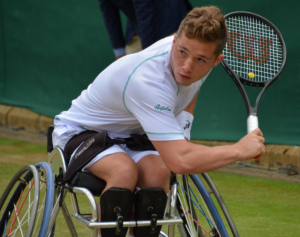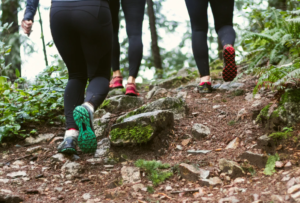It’s mid-July already; how did that happen? If your littlies haven’t already finished school for the summer, then it can only be a matter of days. The older ones may be waiting on GCSE or A-level results. Good luck to them, but remind them what happens now needn’t define them. Yes, it’s important to work hard and do their best, but everyone has different talents and skill sets, and everyone can go on to do well, regardless of exam results.
School’s Out for Summer
Anyhow, back to summer. Do you have plans? Are you jetting off abroad or staying closer to home? The UK has so much to offer – if you’re prepared to take chances with the weather, anyway. Cornwall is beautiful, while the North Wales coast has something for everyone. As the advertising slogan once said, it’s ‘two hours and a million miles away.’

Llanbedrog in North Wales – Two Hours and a Million Miles Away
Perhaps you’ll enjoy a few city breaks? Again, the UK is blessed – we have some beautiful and historic places to visit. Chester is on the doorstep and York, though a little further, has plenty to offer. Edinburgh and Bath are brilliant for a long weekend away.
A Summer of Sport
Despite seemingly relentless rain, July is a month of sport. There’s the Tour de France and the Women’s World Cup – here’s hoping the Lionesses can bring it home again. Wimbledon is done and dusted for another year with a new king and queen of Centre Court crowned – congratulations to Carlos Alcaraz and Marketa Vondrousova.
Did you catch any of the wheelchair tennis? It’s just as exciting as the mainstream game – some would say more so – but it’s both inspiring and humbling, too. You can’t help but admire Norwich’s Alfie Hewett, who narrowly missed out in the final but won the doubles with Gordon Reid. Any sports star dedicates their life, time, and energy, but for differently abled athletes, there are so many additional challenges.

Overcoming Challenges: Wheelchair Tennis Star, Alfie Hewett
Alfie was born with a heart defect which means walking difficult, while Gordon was a promising junior tennis player before a spinal condition left him unable to walk.
You CAN Do It
This leads us to something we hear a lot in clinic when discussing wellness or weight loss. Something along the lines of “I can’t exercise. I have back problems/stiff knees/hip pain/fibromyalgia…” The list is endless. We have every sympathy for those with chronic conditions, but we can almost all do a little bit – and every little helps.
The benefits of even gentle exercise are well documented. As are the negative consequences of NOT exercising, with some pundits stating that “sitting is the new smoking.” OK, it’s not quite that simple, but you get the idea. Alfie has used a wheelchair since he was six years old. If he can achieve what he has, you can do SOMETHING. And, certainly as you reach your forties and beyond, ANYTHING will help. We’re not talking marathons or even HIIT classes. Something as simple and attainable as gentle walking can make all the difference.

Get outdoors. It’s fun!
Exercise is Good for You
Exercise holds numerous benefits and great importance for both men and women. Over the age of 40, it’s essential for bone and muscle health. As we age, regular physical activity becomes increasingly vital for maintaining overall health, preventing or easing chronic conditions, and enhancing quality of life. Here are just some of the specific benefits of exercise for men and women in this age group:
- Weight management: Regular exercise helps maintain a healthy body weight by burning calories and preserving muscle mass. Metabolism tends to slow down a little with age, so exercise becomes even more crucial for weight control.
- Heart health: Aerobic activities like brisk walking, jogging, cycling, or swimming can improve heart health, lower blood pressure, reduce the risk of heart disease, and enhance circulation. Swimming is also easy on the joints.
- Bone health: Ageing brings a higher risk of osteoporosis and fractures. Weight-bearing exercises like walking, running, or strength training help build and maintain bone density, reducing the risk of osteoporosis and improving overall bone health.
- Muscle strength and flexibility: Regular strength training, such as lifting weights, can help build and maintain muscle mass, and improve strength and flexibility. This is especially important as muscle mass tends to decrease with age.
- Joint health: Exercise, including low-impact activities like swimming or cycling, can help alleviate joint pain and stiffness, improve joint mobility, and reduce the risk of conditions like arthritis.
- Mental well-being: Exercise has significant benefits for mental health, helping reduce symptoms of anxiety and depression, improving mood, boosting self-esteem, and enhancing cognitive function.
- General health: Regular physical activity plays a crucial role in preventing various chronic conditions, including type 2 diabetes, certain types of cancer, stroke, and metabolic syndrome.
- Hormonal balance: Exercise can help regulate hormone levels, such as cortisol and insulin, which can contribute to weight gain, stress, and other health issues. This is especially true during perimenopause and menopause when it seems a little harder to keep the weight off. However, that’s when it’s even MORE important to exercise.
- Sleep quality: Regular exercise promotes better sleep quality, helping to regulate sleep patterns and improve overall sleep duration.
- Social engagement: Participating in group exercises, sports, or fitness classes can provide social interaction and a sense of community, which is important for mental well-being and combating feelings of isolation.
Anyone new to exercise should check with their GP before starting any exercise program, especially if they have underlying health conditions or haven’t exercised in a long while. Healthcare professionals can provide personalized recommendations and help tailor an exercise routine to individual needs and capabilities.
Find Something Fun
Please remember that exercise doesn’t have to be boring, daunting, or too hard. Forget the misery of school PE and, urrgh, so-called cross-country running. Exercise doesn’t need to be like that! It doesn’t have to be in the gym. Find something you love, something that makes you happy, and you’ll never have to force yourself to exercise. The most fun forms of exercise will vary greatly depending on personal preferences and interests. What one person enjoys another may hate! However, there are some sorts of exercise that many people love:
- Group Classes: Group exercise classes can be an enjoyable way to stay active while also socializing. Classes such as Zumba, dance aerobics, spinning, or kickboxing can be fun and engaging.
- Team Sports: Engaging in sports activities, whether it’s basketball, tennis, soccer, or golf, can be a great way to exercise while enjoying friendly competition and teamwork.
- Dancing: Dance classes, such as salsa, hip-hop, or ballroom dancing – or even On Broadway dance classes based on the musicals – can be a great way to stay active while learning new moves. If you can’t face classes, there are countless guided dance workouts on YouTube – take it easy though and check on the leader’s credentials. Or just get your favourite music on and dance through the housework.

Get outdoors. It’s fun!
- Outdoor Activities: Activities like hiking, biking, kayaking, or paddleboarding allow you to connect with nature while getting exercise. They can be a refreshing break from indoor routines and can lead to a whole new hobby.
- Low-Impact Exercises: Practices like yoga, Pilates, and Tai Chi not only provide physical benefits but also help improve mindfulness, balance, and flexibility. Many people find these exercises to be calming whilst still providing all the benefits of a workout.
For personalised help and advice with weight loss, we’re here to help. For expert exercise advice, ask friends and family for personal trainer recommendations. All personal trainers are different, and there’ll be one you’ll be happy to work with. It’s not all burpees and jumping jacks – every trainer will have a different approach, as a quick browse on Insta or Facebook will show. We follow the Wedding PT and Jill Greenwood. Have a look and find your own inspo! Let us know how you get on – and what exercise YOU love to do.
Make Today Your New Start
Remember that it’s important to start gradually and listen to your body. If ever there was a time to remember the story of the tortoise and the hare, this is it. Slow and steady beats overdoing it and injuring yourself. If you have any health concerns or limitations, it’s crucial to consult with a healthcare professional or a certified fitness trainer to create a safe and effective exercise plan to suit your specific needs. Get started. A few months from now, you’ll be SO glad you did. Don’t look back those few months from now and wish you HAD.


Recent Comments